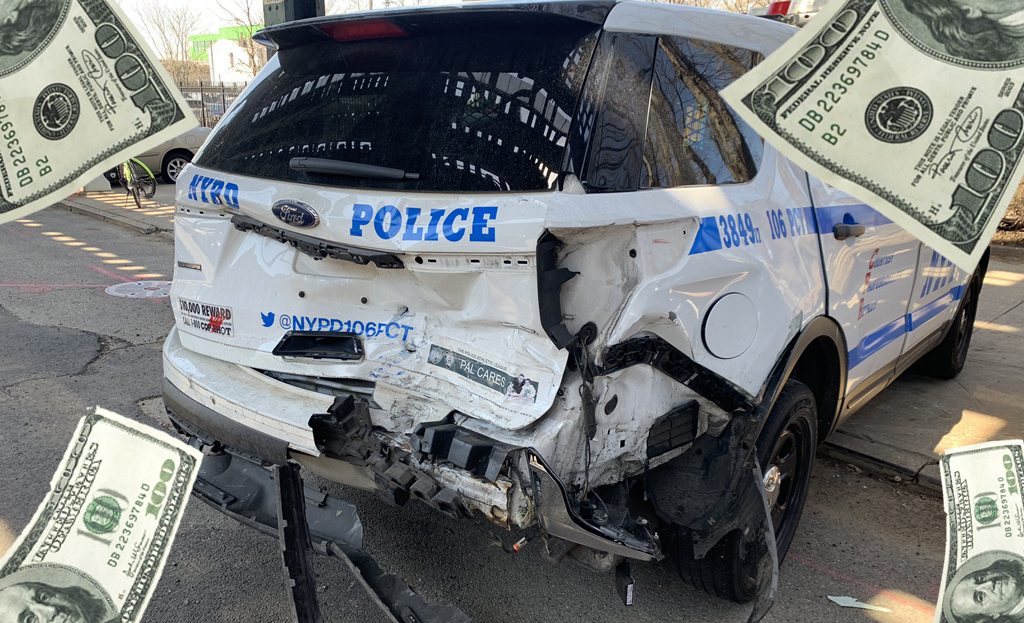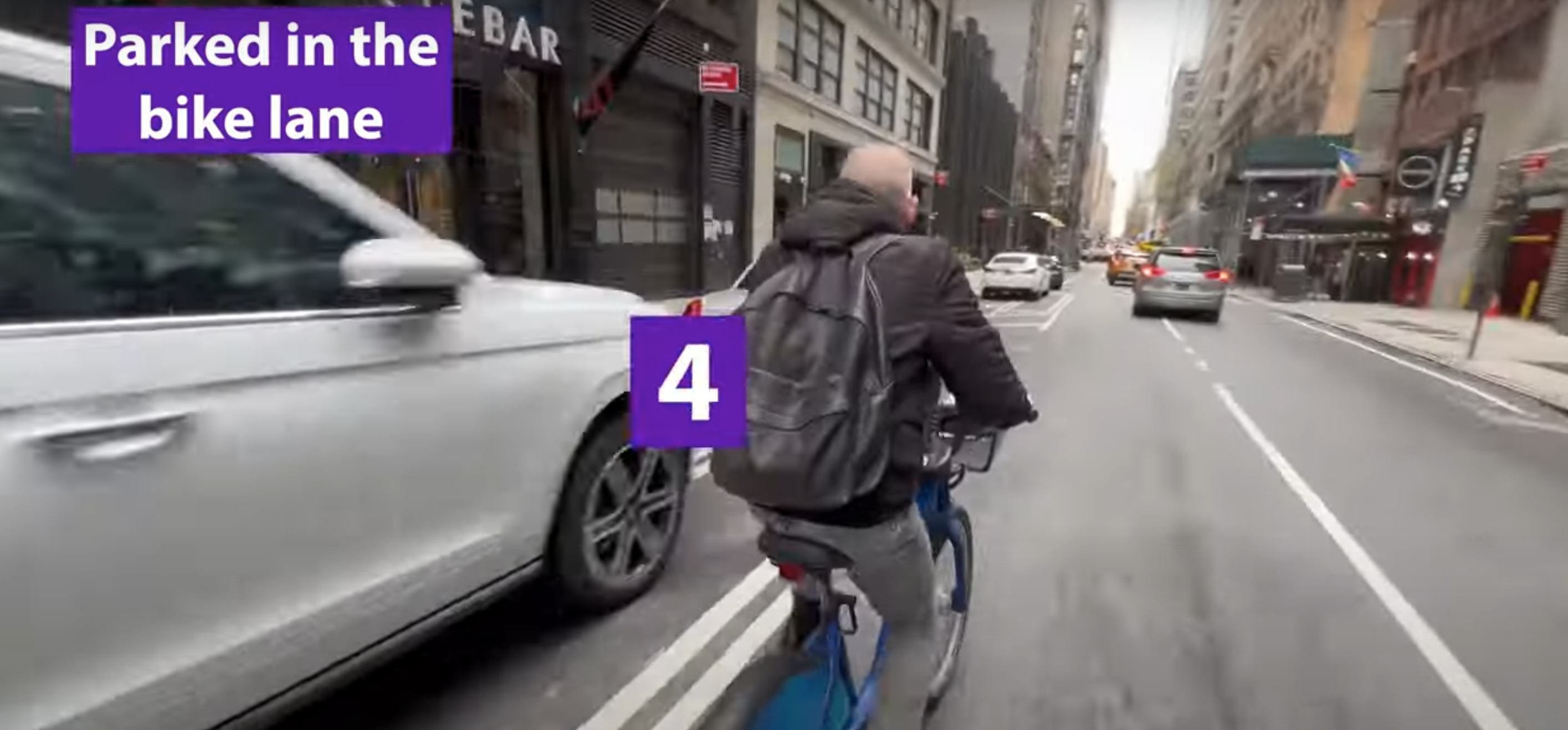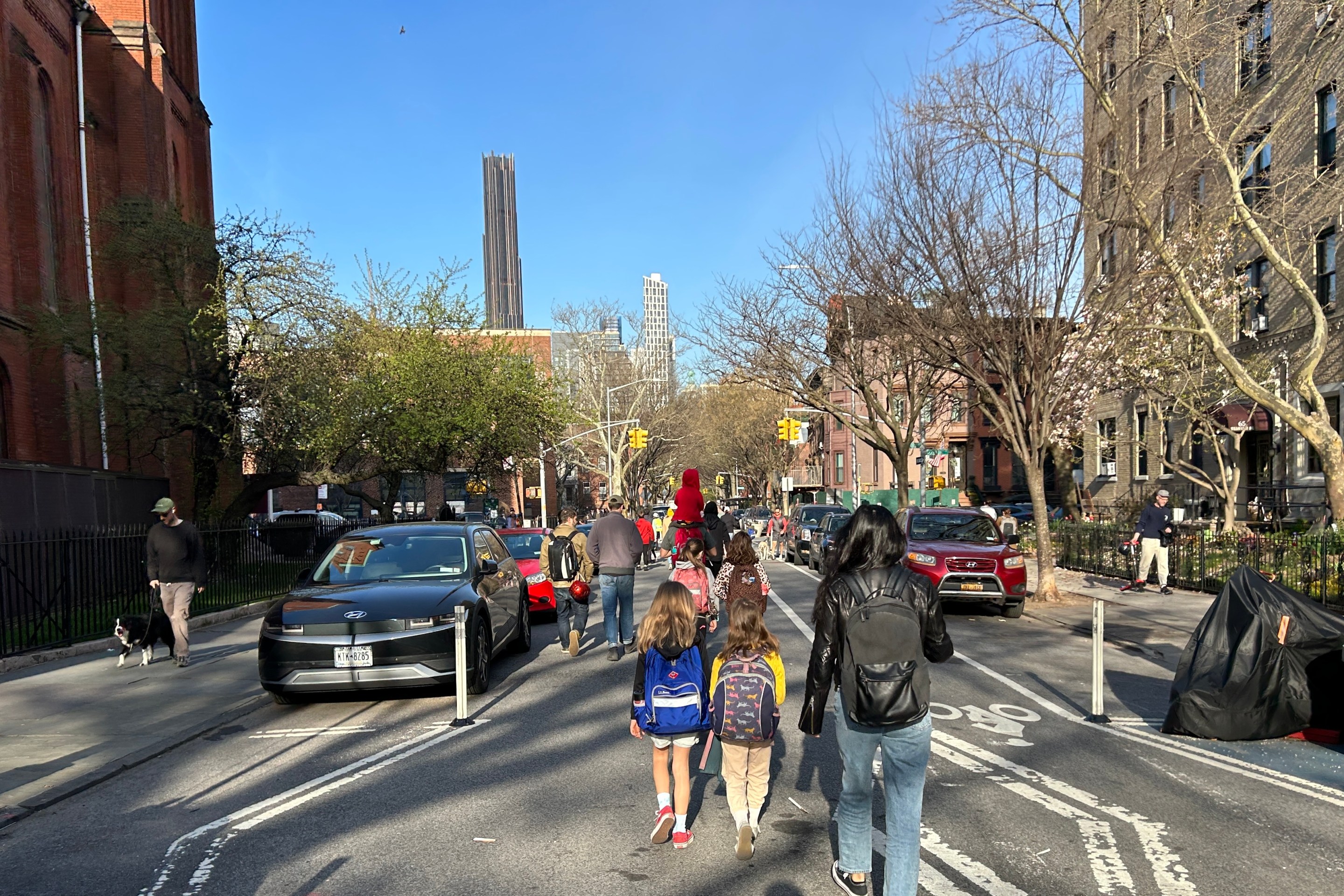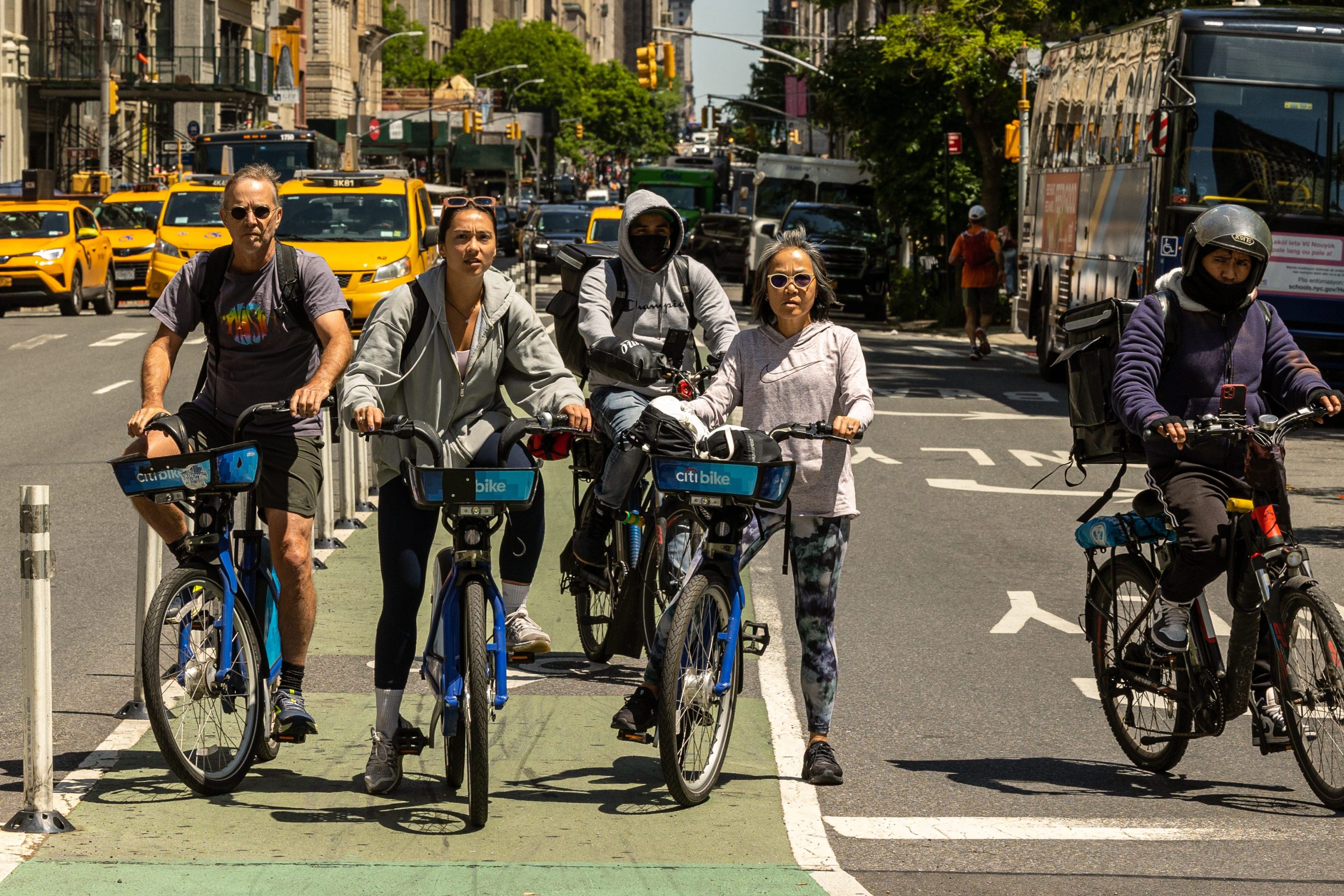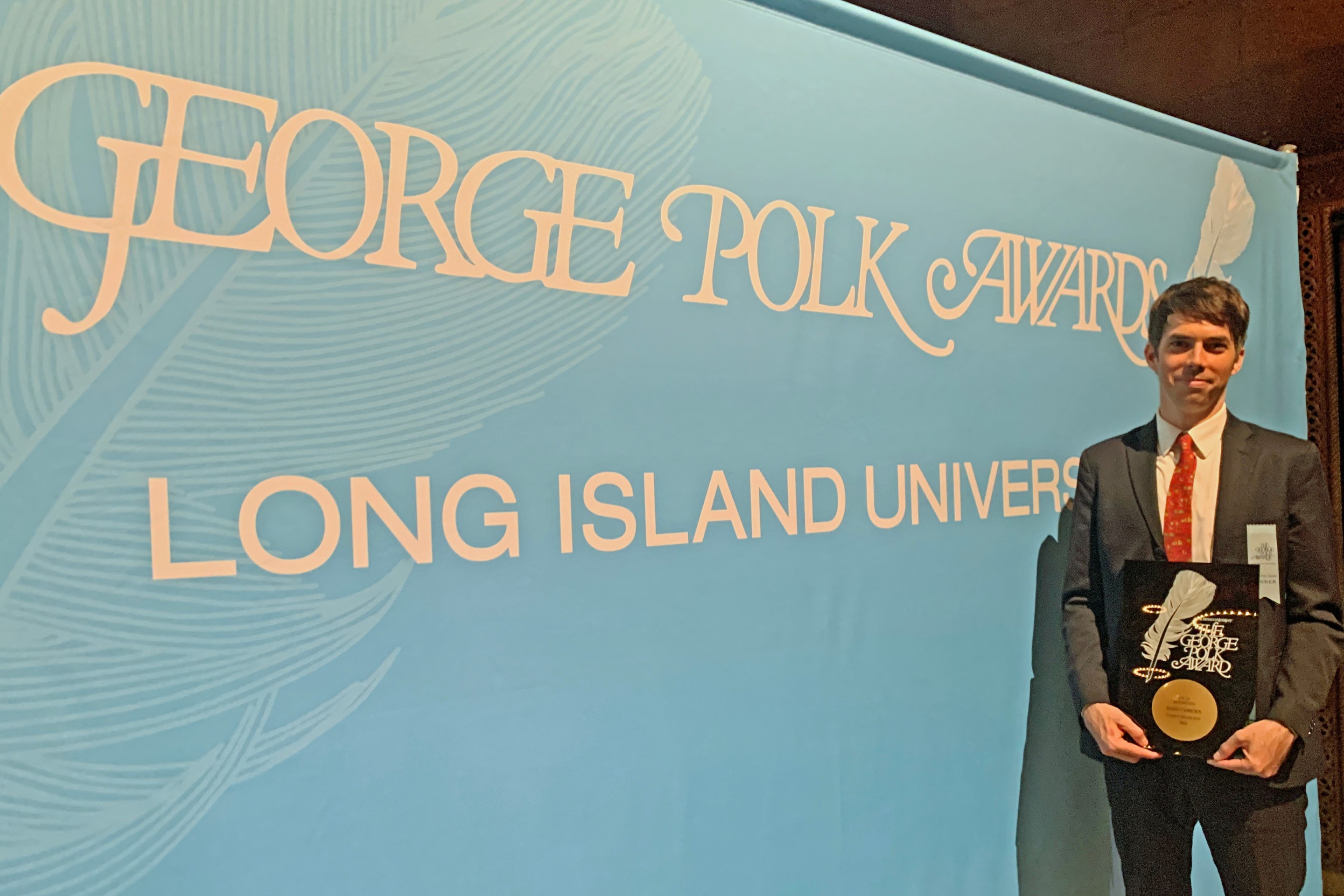While we've been focusing on the stimulus action in Washington this week, the Tri-State Transportation Campaign has kept an eye on the region's state DOTs, which will dispense billions for transportation infrastructure. On Wednesday Tri-State filed suit to prevent the New Jersey Turnpike Authority from widening the Garden State Parkway, a project the agency intends to fund in part with stimulus cash. Tri-State has also kept the pressure on Connecticut's DOT -- which never made its wish list public -- to invest in transit, bike, and pedestrian improvements.
Earlier this week, we asked Tri-State's Michelle Ernst and Steven Higashide about the state DOT wish lists, especially New York's. (It's reasonable, they say.) With the transportation debate set to play out again on a massive scale as the multi-year federal reauthorization approaches, there's no better time to get acquainted with the arcane world of transportation spending. If you're not familiar with the term "sub-allocation" yet, you will be.
Streetsblog: What do urban areas stand to receive compared to rural areas in the New York state list?
Steven
Higashide: I should start by saying that it’s not clear how NYSDOT will prioritize
the projects on its wish list -- that is, how much money will each
regional office actually get?
I did a quick back-of-the-envelope calculation. Based on that, it looks like urban areas get
roughly 25 percent of NYSDOT highway funds, while suburban areas get
around 25 percent and rural areas get 50 percent. Again, this is pretty
back of the envelope; but we can say pretty confidently that rural
areas have more road funding in the list than urban areas.
This
changes once you incorporate transit funding, since the vast majority
of that goes to urban areas, and unlike other states' lists the New
York list is evenly split between transit and highways -- about $1.6
billion requested for each. So once you add MTA and other transit
funding to the NYSDOT highway funds, it's more like 50 percent urban, 25 percent
suburban, and 25 percent rural. I'm not including Thruway Authority money in
the calculation since so much of it is just to stop the Tappan Zee from
falling down.
SB:
If urban areas get shortchanged for routine maintenance/repair projects
in the state list, does that affect cities' ability to invest in
transit/bike/ped projects?
If a municipal agency gets federal money for maintenance work -- which has to be performed -- it frees up local money to be spent on other capital projects. In a progressive agency like NYCDOT, that means more resources for innovative projects like public plazas or redesigning streets for bus rapid transit.
SH: I’m not sure you
can say that a state list that shortchanges urban repair and
maintenance projects will affect cities’ ability to pursue bike and
pedestrian projects, since there is a jurisdictional split between
state-owned and locally-owned roads. However, a state list that
shortchanges necessary maintenance means less money for NYSDOT’s bike
and pedestrian projects, like a portion of the Bronx River Greenway, a
new greenway project along Route 347 in Long Island, and perhaps a
teardown of the Sheridan (we can hope, right?). NYSDOT Commissioner
Astrid Glynn testified before Congress a little over a week ago about
New York’s vast bridge and road maintenance needs; those repair
projects have to be done no matter what, so the more federal funding
they get the more state money is freed up for innovative projects.
SB: Does the same situation apply to a municipal agency like NYCDOT -- if they use stimulus money for maintenance and repair, that frees up resources for more innovative and progressive projects?
SH: It’s basically a similar situation. If a municipal agency gets federal money for maintenance work -- which has to be performed -- it frees up local money to be spent on other capital projects. In a progressive agency like NYCDOT, that means more resources for innovative projects like public plazas or redesigning streets for bus rapid transit. An old-fashioned agency, of course, might choose to spend its freed-up resources on road widening.
SB: What do state lists tell us about the need to reform the federal formulas that divvy up transportation dollars? What's wrong with those formulas now and how can they be adjusted to work better for cities?
Michelle Ernst: Of the highway funds, HR 1 (the stimulus bill) sub-allocates 45 percent to metropolitan areas, with the rest going to state DOTs. This is significant. Research by Linda Bailey (now at NYCDOT) has shown that sub-allocated funds are far more likely to go toward transit, bicycling and walking projects. That said, it really depends on how progressive the metropolitan agency is, just as the distribution of non-sub-allocated funds really depends on how progressive the state DOT is. In California, where the state currently sub-allocates 75 percent of all federal funds, this works great.
We should subject new or expanded road capacity to the same rigorous review that we subject new transit systems and lines to.
There are two issues with the federal formulas. The first is that current federal formulas tend to favor states with a lot of driving because the funds are distributed in large part according to each state's share of nationwide VMT. Some would argue that in New York, the difference is made up with transit funds.
The second issue is how the formulas distribute funding across the major federal funding programs (National Highway System, Interstate Maintenance, Surface Transportation Program, Congestion Mitigation and Air Quality, etc.) Most of these programs are very highway oriented, with the exception of CMAQ. That said, ISTEA made almost all of them very flexible, so that it's really up to the states to determine how best to spend the funds. STP is particularly flexible and can be spent on almost any type of project (including transit), but even NHS can be used for bike/ped projects (apparently the Hudson River bikeway was funded in part with NHS funds).
I'm not sure that the structure of the current federal formulas is the problem. In my opinion, the state DOTs are the primary obstacle to putting more money into transit and bike/ped projects. We need to encourage states to embrace the flexibility inherent in the current bill.
Nevertheless, we could do a lot to improve the bill. To get more money to cities, we could sub-allocate more than the six percent or so that's set aside under SAFETEA-LU. I've also been lobbying for a "New Starts for Roads" program, the idea being that we should subject new or expanded road capacity to the same rigorous review that we subject new transit systems and lines to. I want a cost-benefit analysis conducted for every new road or road widening project which quantitatively demonstrates that adding road capacity is an effective use of federal dollars. I've seen this rhetoric in some of the Obama administration's stuff.
Stay in touch
Sign up for our free newsletter
More from Streetsblog New York City
Car Crashes by City Workers Cost Taxpayers $180M in Payouts Last Year: Report
A record number of victims of crashes involving city employees in city-owned cars filed claims in fiscal year 2023 — and settlements with victims have jumped 23 percent, a new report shows.
Tuesday’s Headlines: Biking with a Dutchman Edition
You really get a fresh perspective on city cycling when you do it with someone from Holland. Plus other news.
City Urges Judge to Toss Anti-Open Streets Lawsuit
The city's not responsible for 24-7 car access to every street, officials argued.
Opinion: Connect the Dots of Manhattan’s Missing Bike Lanes
Only a few miles of missing protected lanes stand in the way of a robust bike network.
Monday’s Headlines: Thanking the Academy Edition
We would be remiss if we didn't offer some photos and copy about Friday's George Polk Awards ceremony, plus other news.
